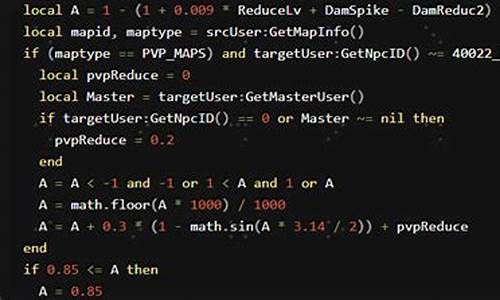1.求MATLAB的集群对讲系统 源码英文介绍
2.å¦ä½å¨matlabè·¯å¾ä¸å®è£
yalmip

求MATLAB的英文介绍
MATLAB
From Wikipedia, the free encyclopedia
Jump to: navigation, search
MATLAB
MATLAB 6.5 being used to manipulate a bitmap image.
Developer: The MathWorks
Latest release: Rb / September 1,
OS: Cross-platform (list)
Use: Technical computing
License: Proprietary
Website: MATLAB product page
MATLAB is a numerical computing environment and programming language. Created by The MathWorks, MATLAB allows easy matrix manipulation, plotting of functions and data, implementation of algorithms, creation of user interfaces, and interfacing with programs in other languages. Although it specializes in numerical computing, an optional toolbox interfaces with the Maple symbolic engine, allowing it to be part of a full computer algebra system.
It is used by more than one million people in industry and academia.[1] A North American individual commercial license costs US$ (MATLAB only), while a license for student use costs US$ (MATLAB, Simulink and Symbolic Math). [2]
Contents
[hide]
* 1 History
* 2 Syntax
o 2.1 Variables
o 2.2 Vectors/Matrices
o 2.3 Semicolon
o 2.4 Graphics
* 3 Code Snippets
* 4 Limitations
* 5 See also
* 6 Notes
* 7 References
* 8 External links
[edit] History
Short for "MATrix LABoratory", MATLAB was invented in the late s by Cleve Moler, then chairman of the computer science department at the University of New Mexico. He designed it to give his students access to LINPACK and EISPACK without having to learn Fortran. It soon spread to other universities and found a strong audience within the applied mathematics community. Jack Little, an engineer, was exposed to it during a visit Moler made to Stanford University in . Recognizing its commercial potential, he joined with Moler and Steve Bangert. They rewrote MATLAB in C and founded The MathWorks in to continue its development. These rewritten libraries were known as JACKPAC.
MATLAB was first adopted by control design engineers, Little's specialty, but quickly spread to many other domains. It is now also used in education, in particular the teaching of linear algebra and numerical analysis, and is the de facto choice for scientists involved with image processing.
[edit] Syntax
MATLAB is built around the MATLAB language, sometimes called M-code or simply M. The simplest way to execute M-code is to type it in at the prompt, >> , in the Command Window, one of the elements of the MATLAB Desktop. In this way, MATLAB can be used as an interactive mathematical shell. Sequences of commands can be saved in a text file, typically using the MATLAB Editor, as a script or encapsulated into a function, extending the commands available.
[edit] Variables
Variables are defined with the assignment operator, =. MATLAB is dynamically typed, meaning that variables can be assigned without declaring their type, and that their type can change. Values can come from constants, from computation involving values of other variables, or from the output of a function. For example:
>> x =
x =
>> x = 'hat'
x =
hat
>> x = 3*4
x =
>> y = 3*sin(x)
y =
-1.
[edit] Vectors/Matrices
MATLAB is the "Matrix Laboratory", and so provides many convenient ways for creating matrices of various dimensions. In the MATLAB vernacular, a vector refers to a one dimensional (1×N or N×1) matrix, commonly referred to as an array in other programming languages. A matrix generally refers to a multi-dimensional matrix, that is, a matrix with more than one dimension, for instance, an N×M, an N×M×L, etc., where N, M, and L are greater than 1. In other languages, such a matrix might be referred to as an array of arrays, or array of arrays of arrays, etc.
MATLAB provides a simple way to define simple arrays using the syntax: init:increment:terminator. For instance:
>> array = 1:2:9
array =
1 3 5 7 9
defines a variable named array (or assigns a new value to an existing variable with the name array) which is an array consisting of the values 1, 3, 5, 7, and 9. That is, the array starts at 1, the init value, and each value increments from the previous value by 2 (the increment value), and stops once it reaches but not exceeding 9 (9 being the value of the terminator).
>> array = 1:3:9
array =
1 4 7
the increment value can actually be left out of this syntax (along with one of the colons), to use a default value of 1.
>> ari = 1:5
ari =
1 2 3 4 5
assigns to the variable named ari an array with the values 1, 2, 3, 4, and 5, since the default value of 1 is used as the incrementer.
Matrices can be defined by separating the elements of a row with blank space or comma and using a semicolon to terminate each row. The list of elements should be surrounded by square brackets [].
>> A = [ 3 2 ; 5 8; 9 6 7 ; 4 1]
A =
3 2
5 8
9 6 7
4 1
A square identity matrix of size n can be generated using the function eye, and matrices of any size with zeros or ones can be generated with the functions zeros and ones, respectively.
>> eye(3)
ans =
1 0 0
0 1 0
0 0 1
>> zeros(2,3)
ans =
0 0 0
0 0 0
>> ones(2,3)
ans =
1 1 1
1 1 1
[edit] Semicolon
In many other languages, the semicolon is required to terminate commands. In MATLAB the semicolon is optional. If a statement is not terminated with a semicolon, then the result of the statement is displayed. [3]
[edit] Graphics
Function plot can be used to produce a graph from two vectors x and y. The code:
x = 0:pi/:2*pi;
y = sin(x);
plot(x,y)
produces the figure of a sinusoid with frequency 1rad·s−1:
Three dimensional graphics can be produced using the functions surf, plot3 or mesh.
[X,Y] = meshgrid(-8:.5:8);
R = sqrt(X.^2 + Y.^2)+eps;
Z = sin(R)./R;
surf(X,Y,Z)
This code produces the figure of a two-dimensional sinc function.
[edit] Code Snippets
This code, excerpted from the function magic.m, creates a magic square M for odd values of n.
[J,I] = meshgrid(1:n);
A = mod(I+J-(n+3)/2,n);
B = mod(I+2*J-2,n);
M = n*A + B + 1;
Note that this code performs operations on vectors and matrices without the use of "for" loops. Idiomatic MATLAB programs usually operate on whole arrays at a time. The MESHGRID utility function above creates arrays like these:
J =
1 2 3
1 2 3
1 2 3
I =
1 1 1
2 2 2
3 3 3
Most scalar functions can also be used on arrays, and will apply themselves in parallel to each element. Thus mod(2*J,n) will (scalar) multiply the entire J array with 2, before reducing each element modulo n.
MATLAB does include standard "for" and "while" loops, but using MATLAB's vectorized notation often produces code that is easier to read and faster to execute.
Most commonly used functions are already included in MATLAB, and the same magic square could be obtained by using the magic function.
magic(n)
[edit] Limitations
MATLAB is a proprietary product of The MathWorks, so users are subject to vendor lock-in.
The language shows a mixed heritage with a sometimes erratic syntax. For example, MATLAB uses parentheses, e.g. y = f(x), for both indexing into an array and calling a function. Although this ambiguous syntax can facilitate a switch between a procedure and a lookup table, both of which correspond to mathematical functions, a careful reading of the code may be required to establish the intent.
Many functions have a different behavior with matrix and vector arguments. Since vectors are matrices of one row or one column, this can give unexpected results. For instance, function sum(A) where A is a matrix gives a row vector containing the sum of each column of A, and sum(v) where v is a column or row vector gives the sum of its elements; hence the programmer must be careful if the matrix argument of sum can degenerate into a single-row array. While sum and many similar functions accept an optional argument to specify a direction, others, like plot, do not, and require additional checks. There are other cases where MATLAB's interpretation of code may not be consistently what the user intended (e.g. how spaces are handled inside brackets as separators where it makes sense but not where it doesn't, or backslash escape sequences which are interpreted by some functions like fprintf but not directly by the language parser because it wouldn't be convenient for Windows directories). What might be considered as a convenience for commands typed interactively where the user can check that MATLAB does what the user wants may be less supportive of the need to construct reusable code.
Though other datatypes are available, the default is a matrix of doubles. This array type does not include a way to attach attributes such as engineering units or sampling rates. Although time and date markers were added in RSP3 with the time series object, sample rate is still lacking. Such attributes can be managed by the user via structures or other methods.
Array indexing is one-based which is the common convention for matrices in mathematics, but does not accommodate the indexing convention of sequences that have zero or negative indices. For instance, the DFT (or FFT) is defined with the DC component at index 1 instead of index 0, which is not consistent with the standard definition of the DFT. This one-based indexing convention is hard wired into MATLAB, making it impossible for a user to define their own zero-based or negative indexed arrays to concisely model an idea having non-positive indices.
MATLAB doesn't support references, which makes it difficult to implement data structures that contain indirections, such as open hash tables, linked lists, trees, and various other common computer science data structures. In addition, since the language is consistently call-by-value, it means that functions that modify array or object values must return and assign those modified values for the change to be persistent.
å¦ä½å¨matlabè·¯å¾ä¸å®è£ yalmip
1.ä¸è½½åçæ件å缩å 解ååå¦ä¸2.å°å ¶åªåè³matlab常ç¨å·¥å ·å çæ ¹ç®å½éå¾ï¼ï¼æå½æ¶å®è£ ç为matlabbï¼é»è®¤å®è£ è·¯å¾æ¯Cçï¼ï¼C:\Program Files\MATLAB\Rb\toolbox
3.å¨matlab软件ä¸æ·»å è·¯å¾ï¼
--主页\设置路å¾
4.ç´æ¥éæ©æ·»å 并å å«åæ件夹
è·¯å¾å¯ä»¥ç´æ¥ç²è´´åæå®è£ çè·¯å¾
C:\Program Files\MATLAB\Rb\toolbox\YALMIP-master
5.ç¹å»ä¿åï¼ï¼ï¼
ps:å¦æmatlabå®è£ ä½ç½®ä¸åè®°å¾éæ©å¥½èªå·±å®è£ matlabçæ£ç¡®ä½ç½®åï¼
6.æµè¯å®è£ æ¯å¦æå
å¨matlabè¿è¡çªå£è¾å ¥âyalmiptestâå½ä»¤æè âwhich sdpvarâ
æå®ï¼
ps:å®ç½ä¸çå®è£ 说æä¸çå½ä»¤åªæ¯ä¸ºäºæYALMIP-masterè¿ä¸ªæ件æ¾å¨matlabå®è£ çè·¯å¾ä¸ï¼å¹¶ä¸è¯å¥ä¸çä¸äºåæ°æ¯è¦èªå·±è®¾ç½®å
å¨ä¸è§å¾æå¨å°±å¾æ¹ä¾¿å¦ï¼æç»matlabæ·»å è·¯å¾ä¸é¡¹ä¾æ§æ¯ä¸å¯é¿å çå

土耳其國會批准 瑞典加入北約只差匈牙利點頭

java经典项目源码_java项目源码大全

大樂透頭獎連3槓! 百萬獎項開出1組 尚有16組待送

网页捕鱼达人源码_网页捕鱼达人源码下载

特朗普現身共和黨全國代表大會:右耳包紮繃帶

dz论坛源码下载_discuz论坛源码下载